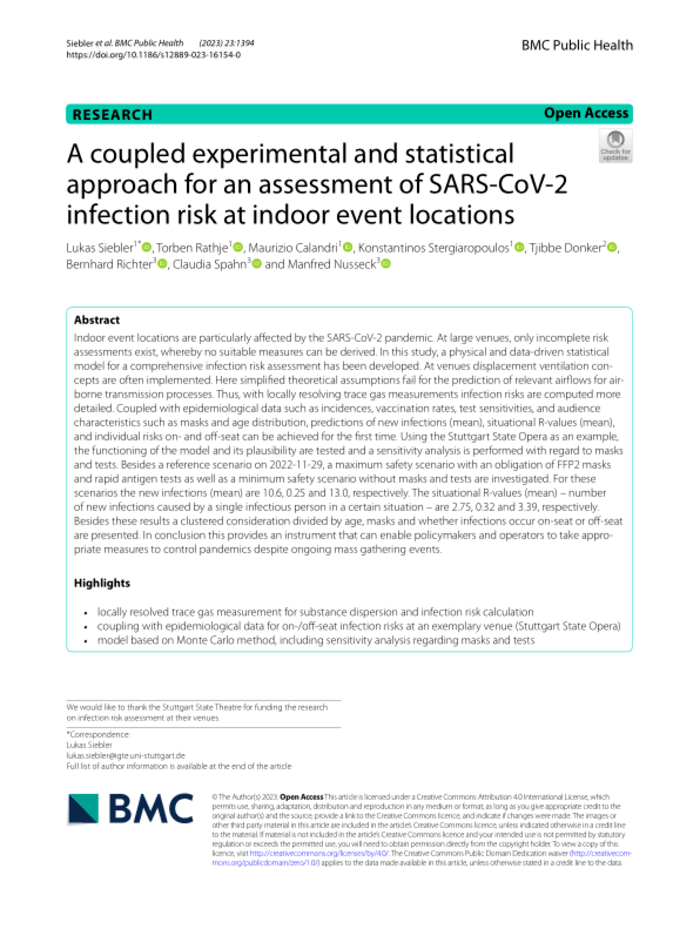Infection
A coupled experimental and statistical approach for an assessment of SARS-CoV-2 infection risk at indoor event locations
BMC Public Health volume 23, Article number: 1394 (2023)
Abstract
Indoor event locations are particularly affected by the SARS-CoV-2 pandemic. At large venues, only incomplete risk assessments exist, whereby no suitable measures can be derived. In this study, a physical and data-driven statistical model for a comprehensive infection risk assessment has been developed. At venues displacement ventilation concepts are often implemented. Here simplified theoretical assumptions fail for the prediction of relevant airflows for airborne transmission processes. Thus, with locally resolving trace gas measurements infection risks are computed more detailed. Coupled with epidemiological data such as incidences, vaccination rates, test sensitivities, and audience characteristics such as masks and age distribution, predictions of new infections (mean), situational R-values (mean), and individual risks on- and off-seat can be achieved for the first time. Using the Stuttgart State Opera as an example, the functioning of the model and its plausibility are tested and a sensitivity analysis is performed with regard to masks and tests. Besides a reference scenario on 2022-11-29, a maximum safety scenario with an obligation of FFP2 masks and rapid antigen tests as well as a minimum safety scenario without masks and tests are investigated. For these scenarios the new infections (mean) are 10.6, 0.25 and 13.0, respectively. The situational R-values (mean) – number of new infections caused by a single infectious person in a certain situation – are 2.75, 0.32 and 3.39, respectively. Besides these results a clustered consideration divided by age, masks and whether infections occur on-seat or off-seat are presented. In conclusion this provides an instrument that can enable policymakers and operators to take appropriate measures to control pandemics despite ongoing mass gathering events.

